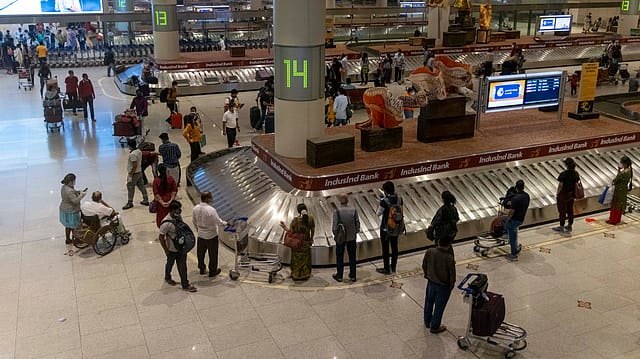Domestic air passenger traffic to expand 8-13% each in FY24 & FY25: ICRA
ADVERTISEMENT

Building on the fast-paced recovery in the ongoing fiscal, ICRA estimates the domestic air passenger traffic to grow by 8-13% year-on-year in FY24, thus reaching 150-155 million, surpassing the pre-Covid levels of 141.2 million seen in FY20.
The momentum is expected to continue in FY25 as well with a similar estimated year-on-year growth, aided by rising demand for air travel and improving airport infrastructure.
During the first eight months of FY24, domestic air passenger traffic stood at 100.7 million, witnessing a YoY growth of 17%, and 5% higher than the pre-Covid levels of 95.7 million in the first eight months of FY20, the rating agency says.
The international passenger traffic for Indian carriers, at 23.9 million in FY23, surpassed the pre-Covid levels, although it trailed the peak levels of 25.9 million in FY19. ICRA expects the same to cross this level in the current fiscal, with an estimated 25-27 million passengers.
The airlines witnessed better pricing power, as reflected in improved yields and in the spread between revenue per available seat kilometre and cost per available seat kilometre (RASK-CASK) for the airlines. ICRA maintains its ‘Stable’ outlook on the industry in view of healthy passenger traffic growth, improved yields and stable cost environment.
January 2026
Netflix, which has been in India for a decade, has successfully struck a balance between high-class premium content and pricing that attracts a range of customers. Find out how the U.S. streaming giant evolved in India, plus an exclusive interview with CEO Ted Sarandos. Also read about the Best Investments for 2026, and how rising growth and easing inflation will come in handy for finance minister Nirmala Sitharaman as she prepares Budget 2026.
“The air passenger traffic momentum witnessed in the current fiscal is expected to continue in FY2025, though further expansion in yields from the current levels may be limited,” says Suprio Banerjee, Vice President & Sector Head – Corporate Ratings, ICRA.
The industry is estimated to report a similar net loss of ₹3,000-5,000 crore in FY25 as well, Banerjee adds.
Despite a healthy recovery in passenger traffic and improvement in yields, the movement of the latter will remain monitorable amidst elevated ATF prices and depreciation of the INR vis-à-vis the US dollar compared to pre-Covid levels, both of which have a major bearing on the airlines’ cost structure.
The average ATF prices stood at ₹103,189 per kilolitre in the first nine months of FY24, 59% higher compared to an average of ₹64,715 per kilolitre during FY20, albeit a decline of 17% compared to ₹121,013 /KL in FY23.
Fuel accounts for around 30-40% of the airlines’ expenses, while around 35-50% of the airlines’ operating expenses – including aircraft lease payments, fuel expenses, and a significant portion of aircraft and engine maintenance expenses – are denominated in US dollar terms.
Some airlines have foreign currency debt. While domestic airlines also have a partial natural hedge to the extent of earnings from their international operations, overall, their net payables are in foreign currency.
More recently, the Indian aviation industry has been facing significant supply chain issues, resulting in around 20-22% of the total fleet being on ground currently. The recent issue related to powder-coating related concerns in engines manufactured by Pratt & Whitney (P&W) is expected to lead to additional aircraft to be grounded by Q4 FY24 of this fiscal – amounting to approximately 22-24% of the industry capacity, says ICRA.
“This will result in high operating expenses towards cost of grounding, increase in lease rentals due to additional aircraft being taken on lease to offset the grounded capacity, along with increasing lease rates and lower fuel efficiency, which adversely impact the airline’s cost structure, and thus overall cash flow generation,” Banerjee adds.
A sizeable part of the fleet addition by airlines will also be meant for expanding international operations. In FY23, share of Indian carriers in international traffic (to and from India) stood at around 42%. This offers adequate growth potential for Indian carriers to gain traction in international traffic over the medium term, ICRA says.
